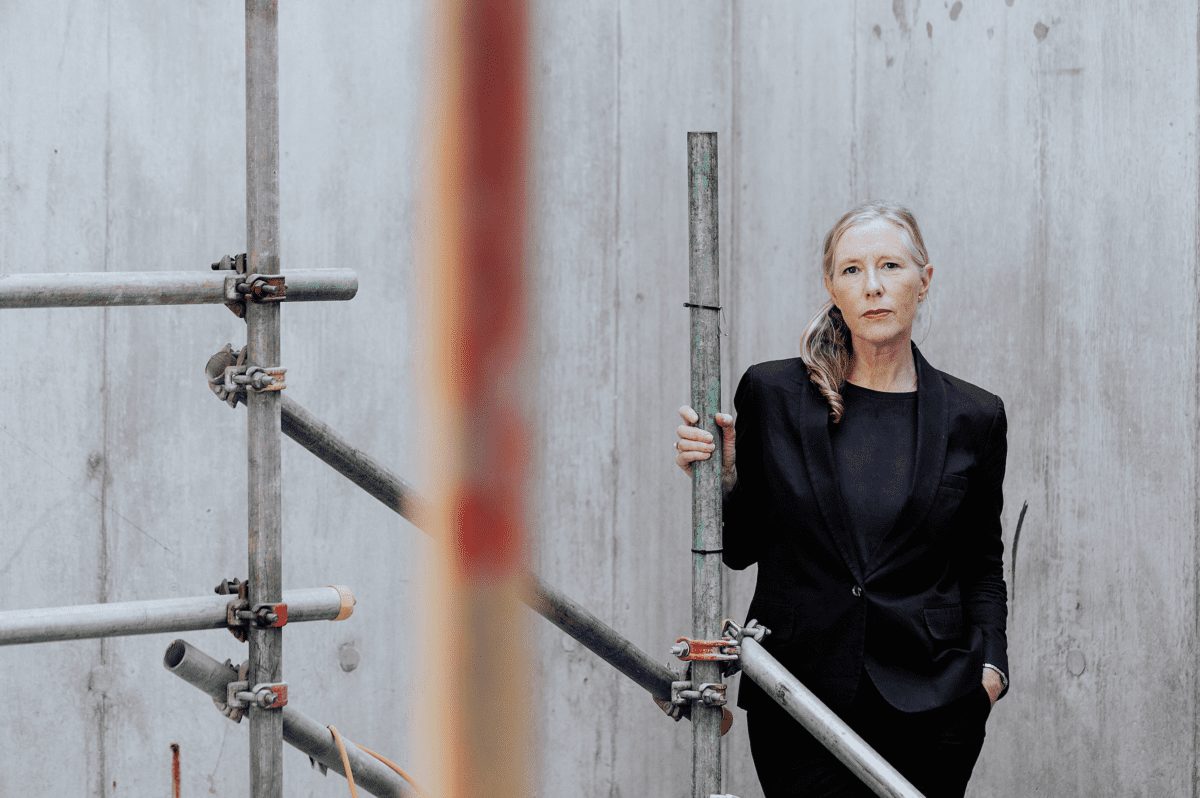
Early last year, architect Roz Barr designed Bureau, a members’ club and workspace in London’s Design District. Then Covid hit. Here Barr shares what she has learned
Nestled in London’s Design District, Bureau was always intended to be an innovative and versatile workspace concept.
The new members’ club was conceived as somewhere that creative freelancers and studios of all sizes, in all disciplines, could work and meet, with flexible spaces to accommodate different working styles and an interior style that would offer a calm and inspiring backdrop for working, events and socialising.

That in itself was an exciting and challenging brief for us – not least because the buildings themselves had not yet been completed – but soon after we started on the project, Covid happened, and everything changed.
The pandemic and the lockdowns it caused shook up everything we as a society had previously taken for granted about work. As a practice, we found ourselves having to design a workspace for the future – at a time when that future was all but unknown. And we had to design it in lockdown, for a site we couldn’t visit.
We had to adapt quickly, finding new ways to work and communicate, both internally and with the client and consultant team. Though challenging, this experience gave us first-hand insight into how the world of working was evolving for those in the creative sector, and we began to form a vision of a workplace that could accommodate and address the new behaviours and systems that had sprung up in the work-from-home revolution.

As well as ensuring that Bureau’s design allowed for easy sanitisation and the implementation of any necessary social-distancing measures, we had to rethink the function of shared workspace, identify where the old office conventions fell short, and develop a workplace concept for the post-pandemic landscape.
Essentially, we had to define what the ‘new normal’ would look like. We identified five key pillars that our design for Bureau would be built on – five ‘rules’ for workplace design in the world after Covid.
1) Adapted to different working styles
The days of sitting at the same desk all day, every day are over. Successful creative workspaces give the individual freedom to select the ideal working style for the task in hand and change up as necessary.
They might switch from private desk to lounge chair to communal table to cafe meeting space as their moods and needs demand. Having to work from home showed us that, in most cases, giving people autonomy over where and how they work doesn’t negatively impact productivity.
In fact, it can enhance it. By recognising how people actually work, and allowing for different working styles in the same space, we can improve the quality of working life – and likely boost productivity in the process.
2) Facilitating connection, community and communication
Although remote working offers a level of autonomy and empowerment that many people find beneficial, it lacks the element of real-world human interaction – the sense of connection to others – that can be integral to both wellbeing and performance.
For creative work in particular – which thrives on the unplanned interchange of ideas and spontaneous conversation with other people – the ability to work in a shared space is invaluable.
Bureau was always intended to be a place that fostered collaboration across disciplines, but we knew that, when it came to returning to the workplace, the opportunity for connection with others would be one of the biggest incentives for creatives.
We made sure Bureau has spaces for teams to get together, and developed a microstudio layout that recreates the community atmosphere of an art school – private screened-off personal work areas within a larger shared space. In such an environment, conversation is key.

3) Fit for purpose
The traditional corporate layout of open-plan banks of desks is no longer appropriate in the world after Covid.
People need dedicated spaces for open discussion; somewhere to retreat to for quiet, focused work; and breakout areas for downtime – and they need the autonomy to move between them as they see fit. There is no one-size- fits-all approach anymore, which is why Bureau doesn’t impose one.
4) Optimised for digital communication
In the age of Zoom and Slack, when teams are distributed, working is flexible, and the concept of ‘travelling to meetings’ is all but redundant. Many of the old conventions of office design aren’t relevant. People need booths that they can retreat to, to take a phone call in private, and somewhere they can sit with their headphones on and catch up via video.
5) Inspiring to be in
With more and more people now having the power to actively choose where they work, workplace providers have to ensure that their offering is aesthetically, practically and economically appealing.
From a design perspective, that means paying attention to the full sensory experience of the space – from the emotional impact of the visual palette to the tactility of the material choices.
There’s a fine line between characterful and try-hard – the interior should only ever be a backdrop to the activity that goes on in the space; it shouldn’t dominate it.
Images by Taran Wilkhu and JWH Photography
Enjoyed this story? Read our digital issues for free here





















